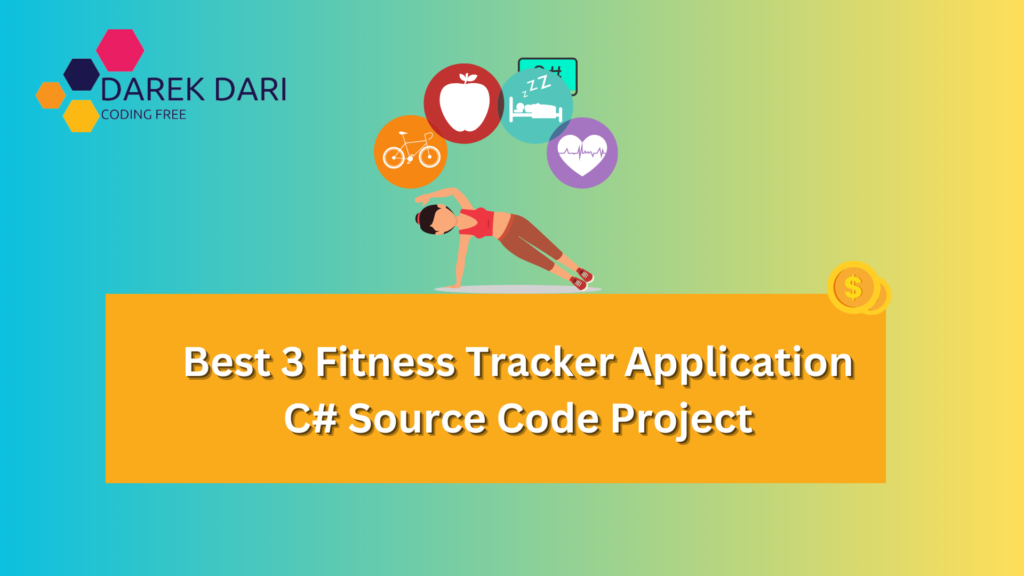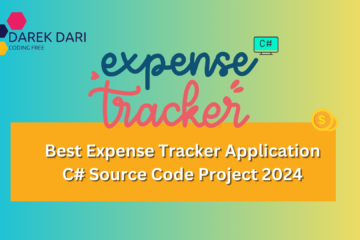
Table of Contents
Introduction
Are you someone who loves Fitness Tracker Application and also has a passion for programming?
If you’ve ever dreamed of creating your own fitness tracker app to take your workouts to the next level, then you’ve come to the right place! This blog is your go-to resource for everything you need to know.
We’ll be exploring the top 2 C# source code projects for Fitness Tracker Application, giving you a step-by-step guide to designing, adding functionality, and customizing your fitness journey like never before.
Whether you’re an experienced C# developer or just starting out, we’ll be with you every step of the way. We’ll highlight the strengths of these projects and provide you with valuable insights to make your app even better.
So, put on your coding shoes, grab your water bottle, and let’s create the ultimate fitness companion using the power of C#!
smart watches hs code
fitness tracker price
fitness tracker hs code
Fitness Tracker Application
Code 1: Fitness Tracker Class Structure
Imagine you’re super excited to kickstart your fitness journey, right? You’re all like, “Hey, I need to keep tabs on my workouts and set some awesome goals!” Well, guess what? We’ve got you covered with this amazing C# code for a fitness tracker.
using System;
using System.Collections.Generic;
public class FitnessTracker
{
public string UserName { get; set; }
public List<Workout> Workouts { get; set; }
public FitnessGoal Goal { get; set; }
public FitnessTracker(string userName)
{
UserName = userName;
Workouts = new List<Workout>();
Goal = new FitnessGoal();
}
public void AddWorkout(Workout workout)
{
Workouts.Add(workout);
}
public void SetGoal(FitnessGoal goal)
{
Goal = goal;
}
}
public class Workout
{
public string Type { get; set; }
public int DurationInMinutes { get; set; }
public DateTime Date { get; set; }
}
public class FitnessGoal
{
public string GoalName { get; set; }
public int Target { get; set; }
}Let’s start by discussing the FitnessTracker Class. This awesome tool is like your very own fitness headquarters. It has all the features you need to monitor your progress. Take a look:
| Property | Description |
|---|---|
| UserName | This is where you put your name in, so the tracker knows who’s boss. |
| Workouts | Think of this as your workout log. Every time you hit the gym or crush a home workout, you add it here. |
| Goal | This is where you set your sights on your fitness goals. Wanna bulk up? Slim down? This is where you make it happen. |
Next, we got the Workout Class. This one’s pretty straightforward:
| Property | Description |
|---|---|
| Type | What kinda workout you doin’, bro? Running? Lifting? Yoga? You name it! |
| DurationInMinutes | How long did you hustle for? This keeps track of the sweat sessions. |
| Date | When did you crush those reps? This helps you keep track of your progress over time. |
And finally, we got the FitnessGoal Class. This is where you set your sights on the prize:
| Property | Description |
|---|---|
| GoalName | What’s your fitness mission, fam? Want them gains or that slim waist? Write it down here. |
| Target | How much you aiming for? Whether it’s pounds lost or muscles gained, set your target and smash it! |
Let’s get this party started!
Constructor Crew: This is the place where your FitnessTracker buddy is brought to life. Just let him know your name (string userName), and he’ll take care of everything for you: creating an empty list for your workouts (Workouts = new List()) and a fresh FitnessGoal object (Goal = new FitnessGoal()).
AddWorkout Hustle: Did you just dominate an intense workout? Awesome! Share the details with your FitnessTracker buddy using the AddWorkout(Workout workout) method. He’ll add that workout information to your list (Workouts.Add(workout)) so you can keep track of all your progress.
SetGoal Champ: Have a new fitness goal in mind? No worries! Simply use the SetGoal(FitnessGoal goal) method to inform your FitnessTracker buddy about your new FitnessGoal object (goal). He’ll update your goal details so you can stay focused and motivated.
This code, my friend, is designed to keep you focused and motivated. It stores your workout progress, tracks your goals, and acknowledges all the effort you’ve invested. So go ahead, step out and conquer your fitness adventure!
step tracker watch
activity tracker watch
exercise tracker
smart watches hs code
P.S. Remember, this code is a work in progress. You have the freedom to enhance it with additional features such as calorie tracking, sleep monitoring, and perhaps even a motivational companion to keep you energized. The possibilities are endless!
Code 2: Fitness Tracker Application Usage Example
class Program
{
static void Main()
{
FitnessTracker tracker = new FitnessTracker("JohnDoe");
Workout workout1 = new Workout { Type = "Running", DurationInMinutes = 30, Date = DateTime.Now.Date };
Workout workout2 = new Workout { Type = "Weightlifting", DurationInMinutes = 45, Date = DateTime.Now.Date.AddDays(-1) };
tracker.AddWorkout(workout1);
tracker.AddWorkout(workout2);
FitnessGoal goal = new FitnessGoal { GoalName = "Lose Weight", Target = 5 };
tracker.SetGoal(goal);
Console.WriteLine($"User: {tracker.UserName}");
Console.WriteLine($"Workouts: {tracker.Workouts.Count}");
Console.WriteLine($"Current Goal: {tracker.Goal.GoalName} - Target: {tracker.Goal.Target} lbs");
}
}Alright, fam! Let’s break down this code step by step:
- Main Method:
- This is where the action goes down. It’s like the heart of the program.
- First thing, we create a new instance of the
FitnessTrackerclass and name ittracker, and we pass “JohnDoe” as the username. - Then, we create two workouts:
workout1is a 30-minute running session that happened today.workout2is a 45-minute weightlifting session that went down yesterday.
- We add both workouts to our
trackerusing theAddWorkout()method. - Next up, we set a fitness goal. Our goal is to “Lose Weight” by 5 pounds.
- Finally, we print out some info:
- The user’s name.
- The total number of workouts they’ve logged.
- Their current fitness goal and the target weight they’re aiming for.
2. Output:
- After all this hustle, we print out some sweet deets to the console:
- User: JohnDoe
- Workouts: 2 (cause JohnDoe ain’t slacking!)
- Current Goal: Lose Weight – Target: 5 lbs
hts
activity trackers
activity tracking
fitness band
code number
harm code
harmonized tariff schedule
How do I make a fitness tracking app?
Making a Fitness Tracker Application can be an exciting adventure! Here’s a simplified guide to help you get started:
- Define Your Goals and Features: Before you begin development, outline the main objectives of your app. What do you want users to track? Think about features like workout logging, goal setting, progress tracking, and social sharing.
- Choose Your Platform: Decide whether you want to develop for iOS, Android, or both. You can choose native development using Swift for iOS or Kotlin/Java for Android, or you can explore cross-platform frameworks like React Native or Flutter.
- Design Your User Interface (UI): Sketch out the layout of your app screens. Focus on creating an intuitive and user-friendly interface that makes it easy for users to log workouts, view progress, and set goals.
- Set Up a Database: You’ll need a database to store user data such as workouts, goals, and progress. Choose a database solution that fits your needs, such as SQLite, Firebase, or MongoDB, and set up the necessary tables or collections.
- Implement Core Functionality:
- Workout Logging: Allow users to log their workouts by entering details like exercise type, duration, and intensity.
- Goal Setting: Enable users to set fitness goals like weight loss, muscle gain, or running distance.
- Progress Tracking: Display users’ progress over time through graphs, charts, or statistics.
- Social Features: Consider adding social features like sharing workouts or competing with friends to boost user engagement.
6. Integrate APIs (Optional): Think about integrating APIs for additional functionality, such as accessing exercise databases, GPS tracking for outdoor activities, or social media sharing.
7. Test Your App: Thoroughly test your app to ensure it works smoothly on different devices and screen sizes. Fix any bugs or glitches that come up during testing.
8. Deploy Your App: After completing your app, make sure to deploy it to the appropriate app stores such as the Apple App Store and Google Play Store, or explore other distribution channels if it’s intended for internal use.
9. Gather Feedback and Iterate: Engage with user feedback and make necessary improvements to your app based on their suggestions. Continuous enhancement is crucial for creating a thriving fitness tracking application.
Developing a Fitness Tracker Application involves more than just coding; it’s about comprehending your users’ requirements and delivering a beneficial solution to assist them in reaching their fitness objectives. Stay inspired, continue to learn, and embrace the process of app development!
hts codes
htsus code
schedule b
hs codes
fitness tracker watch
What is the input of a fitness tracker?
This isn’t magic, my friend. Your fitness tracker needs to gather information from somewhere in order to keep track of your activities, right? Here’s the scoop on how it all operates:
You’re the Boss:
- Buttons on the Tracker: Some original trackers have buttons that you press to record details such as workout time and type (running, swimming, etc.). It’s simple and straightforward.
- Mobile App: Nowadays, most trackers are connected to a phone app. Through the app, you can log your workouts in more detail, including calories burned and distance covered. You can even set goals to keep yourself motivated.
Sensors Doing the Job:
These little warriors embedded in your tracker are constantly tracking various aspects.
| Sensor Name | What It Does |
|---|---|
| Accelerometer | This dude senses movement, trackin’ your steps, how hard you workin’ out, and sometimes even how you sleepin’. |
| Gyroscope | This homie knows your direction, tellin’ the tracker if you walkin’ or runnin’ (big difference, yo). |
| Heart Rate Monitor | This cat keeps an eye on your heart rate during workouts, so you know how hard you pushin’ and how many calories you burnin’. |
| GPS (optional) | Some trackers got built-in GPS to track how far you go and where you been (perfect for runs or bike rides outside). |
Bonus Sensors (not on every tracker):
- Blood Oxygen Sensor: This dude checks your blood oxygen levels, which can be helpful for athletes or folks with certain health conditions.
- Skin Temperature Sensor: This homie tracks your body temp, which can be good for keepin’ an eye on your overall health.
Remember: Not all trackers got all the bells and whistles. Simpler ones might just rely on you tellin’ it what’s up, while the high-tech ones got a whole crew of sensors trackin’ everything.
Basically, your fitness tracker’s a detective, gatherin’ info from you and its sensors to paint a picture of your activity and progress. Pretty cool, huh? Now get out there and crush those workouts!
How do fitness trackers collect data?
You can input information manually using buttons (found in older models) or through a mobile app (common in newer models). This allows you to record your workouts, set targets, and include details such as calories burned.
The other way data is gathered is through built-in sensors like accelerometers (for tracking steps), gyroscopes (for monitoring movement type), and heart rate monitors (to measure workout intensity). More advanced trackers may also have GPS (for tracking distance) or blood oxygen sensors (useful for athletes).
The type of information gathered depends on the features of your specific tracker. This data is valuable for keeping you motivated, improving your workouts, and achieving your fitness objectives!
What is fitness tracking devices?
Fitness trackers are small devices that you can wear, such as a watch or wristband, to keep track of your physical activity and health. They act like your own personal trainer right on your wrist!
These trackers use sensors and your input to monitor various things like the number of steps you take, the distance you travel, the calories you burn, your activity intensity, your sleep patterns, and your heart rate.
Benefits of using a fitness tracker include staying motivated by seeing your progress, setting achievable goals, gaining a better understanding of your activity levels and sleep quality, and receiving personalized workout suggestions based on your data.
fitness tracker
fit tracker
fitness watches
hts code
When choosing a Fitness Tracker Application, consider the features that are important to you, such as GPS, heart rate monitoring, or sleep tracking. Also, think about the battery life, comfort, and price of the tracker to find one that fits your needs and budget.
In the end, fitness trackers can be a great tool to help you stay active, motivated, and achieve your health and wellness objectives!
Fitness Tracker Application C# Source Code Project
How to code an app?
Coding an app involves several steps, but here’s a quick rundown:
- Plan:
- Define the app’s purpose and target audience.
- Sketch out the main features and user interface (UI).
- Choose your tools:
- Select a programming language (e.g., Swift for iOS, Kotlin for Android) and a development environment (IDE) to write your code.
- Write the code:
- Use your chosen language to write instructions that tell the device what to do and how to display information. This involves building the UI, handling user interactions, and connecting to any necessary data sources.
- Test and debug:
- Run your app and identify any errors or functionalities that need improvement. Fix these issues (debug) and test again.
- Publish (optional):
- If you want your app available to others, submit it to app stores like Apple’s App Store or Google Play Store, following their guidelines.
Remember: Coding takes time and practice. Start with small projects and gradually build your skills. There are many online resources, tutorials, and courses available to help you learn!
Additional Links For Fitness Tracker Application
Conclusion
In conclusion, this article has provided a foundational C# code structure for a fitness tracker. However, the true potential lies in the ability to customize and tailor it to your specific needs.
- Delve Deeper: Enhance the “Workout” class by incorporating more detailed information such as calories burned, distance covered, or specific exercises performed. This will provide a more comprehensive overview of your fitness journey.
- Embrace Wearable Technology: Seamlessly integrate with smartwatches or fitness bands to automatically import workout data. Say goodbye to manual entries and enjoy effortless data tracking.
- Visualize Your Progress: Utilize charts and graphs to visually represent your progress. Observing positive trends can serve as a great motivator to keep pushing forward.
- Connect and Compete: Consider incorporating social features to connect with friends or join a fitness community. Share your workouts, engage in friendly competition, and provide support to one another.
- Explore Advanced Features: Take it a step further by exploring features such as sleep tracking, personalized nutrition plans, or workout recommendations tailored to your goals and progress.
Remember, this is just the beginning. With a touch of creativity and additional coding, this C# project can transform into a comprehensive fitness tracker application – a powerful tool to help you achieve your health and wellness goals. So, grab your metaphorical coding weights, prepare to build, and embark on your unique fitness journey!
For additional features, you can extend the Fitness Tracker Application by adding functionalities like calculating calories burned, generating workout reports, setting reminders, or integrating with wearable devices for real-time tracking.
Fitness Tracker Application C# Source Code Project
This Fitness Tracker application provides a solid foundation for building a comprehensive Fitness Tracker Application in C#. Happy coding!




0 Comments